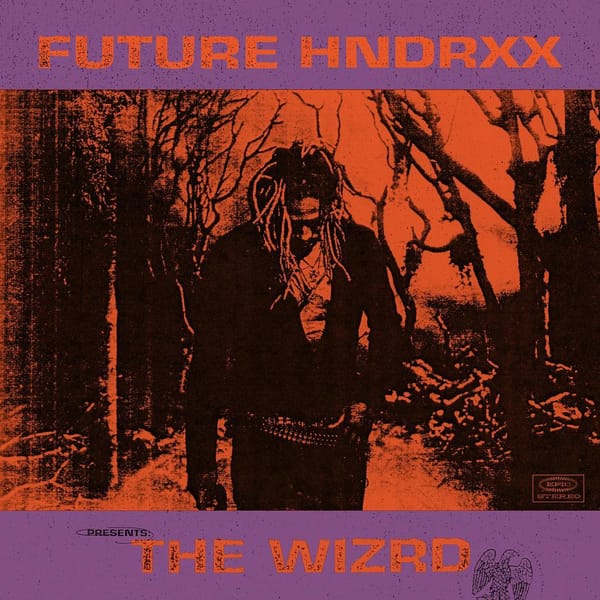The man with the Midas touch, ante-ambient
How Brian Eno’s solo debut Here Come the Warm Jets cemented his legacy as one of music’s most unconventional yet influential figures.

Apart from creating the Windows 95 start-up sound, Brian Eno is perhaps best known for pioneering the genre of ‘ambient music’, where extended instrumental compositions slowly loop and bubble, creating soundscapes that are intricate yet discreet. His work in this area went on to directly inspire artists such as Aphex Twin, William Basinski, and Tim Hecker. Long before this, however, Eno was doing something really quite different.
His musical career began in 1970, though not as a musician, when he joined groundbreaking art rock band Roxy Music as a ‘technical advisor’. He’d known founder member Andy Mackay from their days in art school where the two hand bonded over their shared love of electronic music, and so when Mackay joined forces with singer Bryan Ferry, he convinced Eno to come aboard. It was an odd appointment, as Eno played no instruments and had absolutely no musical experience. What he did bring to the table, however, was a reel-to-reel tape recorder and a eye for experimentation.
Before long, Eno became an integral part of the band. Their debut album Roxy Music (1972) was a genre-blending landmark of creativity, fusing glam, prog, and pop to form a symphonic whirlwind of an LP. A constant advocate for the avant-garde, Eno’s influence was strong; he contributed synthesisers and tape effects that gave their music an otherworldly quality. On stage he was a wizard. Cutting and manipulating tapes to distort their sound in real time. This, along with his flamboyant feather boas, garnered him much attention, despite never taking centre stage. His presence was only amplified on their second album For Your Pleasure (see Felix issue 1686), particularly on the eerie and dystopian closing track.
Frontman Bryan Ferry (along with just about everyone who knew them) drew much inspiration from 60s proto-punk band the Velvet Underground. The story of their early days is one of a great power struggle and fierce rivalry between two extraordinary musicians. Vocalist and primary songwriter Lou Reed was, for the most part, a straight forward New York rock and roll type with insatiable charisma. By contrast, fellow bandmate John Cale was a reclusive viola-playing Welshman. The two grappled to take the band in different directions. Reed, frustrated by their lack of commercial success, wanted to pull them towards the mainstream, while Cale sought to further nourish their experimental artistry. Following their second album, White Light/White Heat, the tensions became too great, and Cale was acrimoniously given the boot.
It is fitting, or perhaps ironic, therefore, that Roxy Music nigh on exactly replicated the path carved by their idols. After just two albums, dashing crooner Ferry began to tire of Eno the bohemian stealing the limelight, and wanted to take the band in more conventional directions. Resistant to this change, Eno departed citing creative differences, leaving Ferry the dominant force. While both Roxy and the Velvets continued to produce very fine music without their respective renegades, it is certainly arguable that something of their original creative flair was lost. Coincidentally, though not unsurprisingly, Eno and Cale would later go on to become firm friends and collaborators, even recording an album together, 1990’s Wrong Way Up.
Free of restrictions, Eno allowed his creative tendencies to run wild. His debut solo album Here Come the Warm Jets was released in January 1974, though it was anything but solo in nature. A thread that was to run through the rest of his career, Eno enlisted a whole host of collaborators, including all members of Roxy Music (bar Ferry), and King Crimson guitarist Robert Fripp, with whom he had recently recorded the experimental noisescape ( No Pussyfooting ). Recording techniques were as unconventional as you would imagine, with Eno often directing musicians to swap instruments, or giving instructions solely through the medium of dance. For those who know Brian Eno only for his ambient work, the initial shockwave hits immediately in the form of a throbbing distorted guitar. Shortly afterwards, we find out that Eno can sing. And boy, can he sing ! The first side is frenetic and high-octane. With conventional song structures out the window, hooks and choruses are in short supply, while feedback-driven instrumentals (notably Fripp’s sublime guitar work on ‘Baby’s On Fire’) are aplenty. Cryptic lyrics act more as impressionistic word decorations than narrative devices, with Eno’s voice veering between distant drones and staccato snarls. As the noise of sinister nursery rhyme ‘Driving Me Backwards’ draws to a close, we hit a change of gear. The piano-led ballad ‘On Some Faraway Beach’ is by far the most tender moment on the LP, its simplistic yet evocative lyrics (“Unlikely I’ll be remembered / as the tide brushes sand in my eyes / I’ll drift away”) ushering in an unexpected moment of clarity and vulnerability. Following this precedent, the second side is musically lighter, favouring synths over guitars. It’s here that we can see the seeds of his minimalist approach begin to germinate, though it wouldn’t sport its first flower until Discreet Music, just short of two years later.
Here Come the Warm Jets is a peculiar yet extraordinary stepping stone in Eno’s career. It was here that he first challenged the norm and probed what it really meant to make music, the resulting album being more akin to a Dadaist vignette than a pop-rock record. After a string of ever more experimental solo albums, he soon found himself engaging in landmark collaborations with David Bowie and Talking Heads, and behind the boards producing for the likes of Devo, U2, and Coldplay (we all make mistakes). His gargantuan influence on the musical landscape really cannot be understated, and he’s still churning a regular output to this day. Seemingly without even trying, everything he touches turns to gold.










